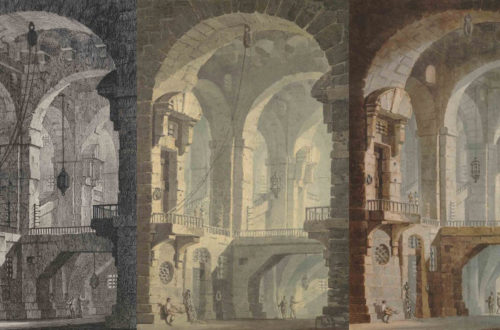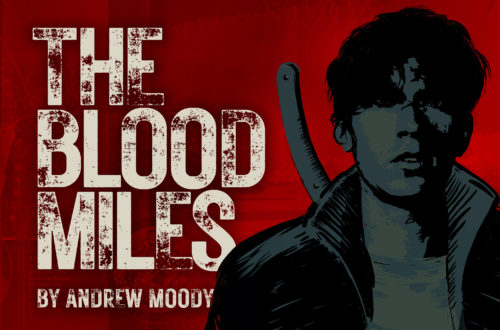
An Easter Easter Egg
I like a good Easter egg. Not a chocolate egg—I mean a secret meaning or symbol buried in a film or game or story. I included a whole bunch of them in The Blood Miles and had a lot of fun doing it.
The Bible Is Chock Full of Easter Eggs
The Bible is chock full of Easter eggs too. Alongside the explicit prophecies and quotes—which are probably too obvious to count—there are moments of foreshadowing, and patterns, and double meanings that seem very Easter-eggy. Think, for example, of Abraham’s near-sacrifice of Isaac and his declaration that God would provide the lamb (Gen 22:8). Although the New Testament never spells it out, Christians through the centuries have taken this to be an Easter egg for the time when God would provide his Son as the Lamb to take away the sins of the world. Or think of that moment in the New Testament, when Caiaphas proposes killing Jesus to save the people from the wrath of Rome (Jn 11:49–51). We might see another type of Easter egg again in Acts 2, when God overcomes the language barrier by his Spirit—an unspoken nod to Genesis 11.
Easter Eggs in Creation
But maybe Creation—that is, God’s general revelation—has Easter eggs in it too. Recently I have been enjoying God of All Things, Andrew Wilson’s reflections on the natural realities that occur in Scripture. Among many other things, Wilson considers questions like:
- what makes a rock a suitable metaphor for God;
- why our Maker chose to make us from dust rather than clay;
- how modern understandings of the universe refresh our appreciation of what Scripture says;
- why Jesus compares his people to salt;
- how humans are like pigs (naturally filthy, excellent when converted into bacon).
That last example illustrates the risk of such nature theology. When the Bible does the job for us—compares God’s voice to thunder (Ps 29), or Christ’s lifegiving grace to water (Jn 4), or explains the true meaning of marriage (Eph 5:31–32) then we can be confident of the connection. But that doesn’t mean that every imaginative interpretation of the world will be what the Maker intended. When we go beyond what is written, things become less certain. The Gospel Coalition (USA) had a difficult reminder of this last year when it endured a withering Twitter-storm after publishing an article that described sexual intercourse as a symbol of Christ’s fruitful presence in his church.
This is not to say that speculations are themselves wrong. They might work as illustrative metaphors, even if they aren’t strictly what God had in mind when he created them. We are allowed to use our imaginations—as long as we acknowledge what we are doing and don’t accord our theories the status of divine revelation.[1]
The Sun and the Son
With that preamble out of the way, and with Easter upon us, here is a speculation on the interesting connection between Jesus the Son and the physical sun. As Andrew Wilson observes in his chapter on our home star, if any part of creation has a plausible claim to be a god, it is the sun—doubly for so for people in ancient times:
So far as anyone knew until quite recently, the sun was by far the largest thing in the sky and the source of all light, heat, power, and life.
As Wilson goes on to point out, this made the sun both a threat to true religion and also a tremendously powerful symbol of the real Giver of light and life. Thus, as the prophets stress that the sun is just a creature—a glorious sub-ruler (Gen 1:16) who will finally replaced by God and the Lamb (Rev 22:5—they also present it as a metaphor for God: “The Lord God is a sun and shield,” writes the Psalmist (Ps 84:11); “The sun of righteousness will rise with healing in its rays,” says Malachi, prophesying of the last days.
Wilson explains this very well, and also observes how the metaphor works even better in the age of science:
In modern terms, it is the giant gravitational centrepiece of the solar system … Although it is created, its existence even points to the independence of God, since the sun is a luminary in its own right rather than (like the moon) reflecting light from another source. It governs our notions of time (the hours of the day). It governs our notions of space (our relative sense of east and west).
Building on what Wilson says here, the sun turns out to be even more like God than the ancients knew. For them, he was a wonderful part of God’s creation who comes forth from his heavenly tabernacle…
… like a bridegroom coming out of his chamber,
like a champion rejoicing to run his course.
It rises at one end of the heavens and makes its circuit to the other;
nothing is deprived of its warmth. (Psalm 19:5–6)
But for us, the Sun is the fixed centre of the Solar System—the governor of all the other planets, times and the axle on which all life turns.
And isn’t this, strangely, how it is with Jesus Christ?
- Jesus, who came forth from his heavenly tabernacle (Jn 3:13; 1:14) and ran his course like a bridegroom, and has now been made the centre of all things (Eph 1:9–10; Phil 2:9–11);
- Jesus, who rose and is still making his way around the world, warming the nations as the gospel spreads (oddly, mostly from east to west);
- Jesus, who went down in darkness and was raised on the first day of the week (in Hebrew reckoning) [2] which is also named for the Sun (in western civilisations since Babylon);
- Jesus, who came to give us life and is the light of the world and turns out to be the very reason why we exist—the sun around which we orbit.
Jesus, in other words, is the true Sun. Or, rather, to put it theomorphically, the sun is a bit like him. The sun that gives light and life to every creature is a physical echo of the true spiritual Light that gives light and life to everyone (John 1:4, 9).
Now again, it is speculation to state it this strongly—and I know that it breaks down when we consider the Sun within the wider context of other galaxies. And yet I can’t help thinking that there is something significant here: something in the way the sun shows us God in a way that no other inanimate creature can; something in the way the sun appears to us and really is—and how those two things complement and contrast.
Maybe the sun is an even better Easter egg than the ones we’ll be enjoying next Sunday.
First published 25/03/2024 at The Gospel Coalition, Australia.
[1] Which is to say that one of the main problems with the TGC post was that it wasn’t presented with due caution—as a possible way to think about human sexuality.
[2] The number 1 has its own connotations for Judaism: associations with the one God (the Creator who was there on the first day of creation), and with that sunless light of the first day of creation (Gen 1:3 c.f. John 1).




